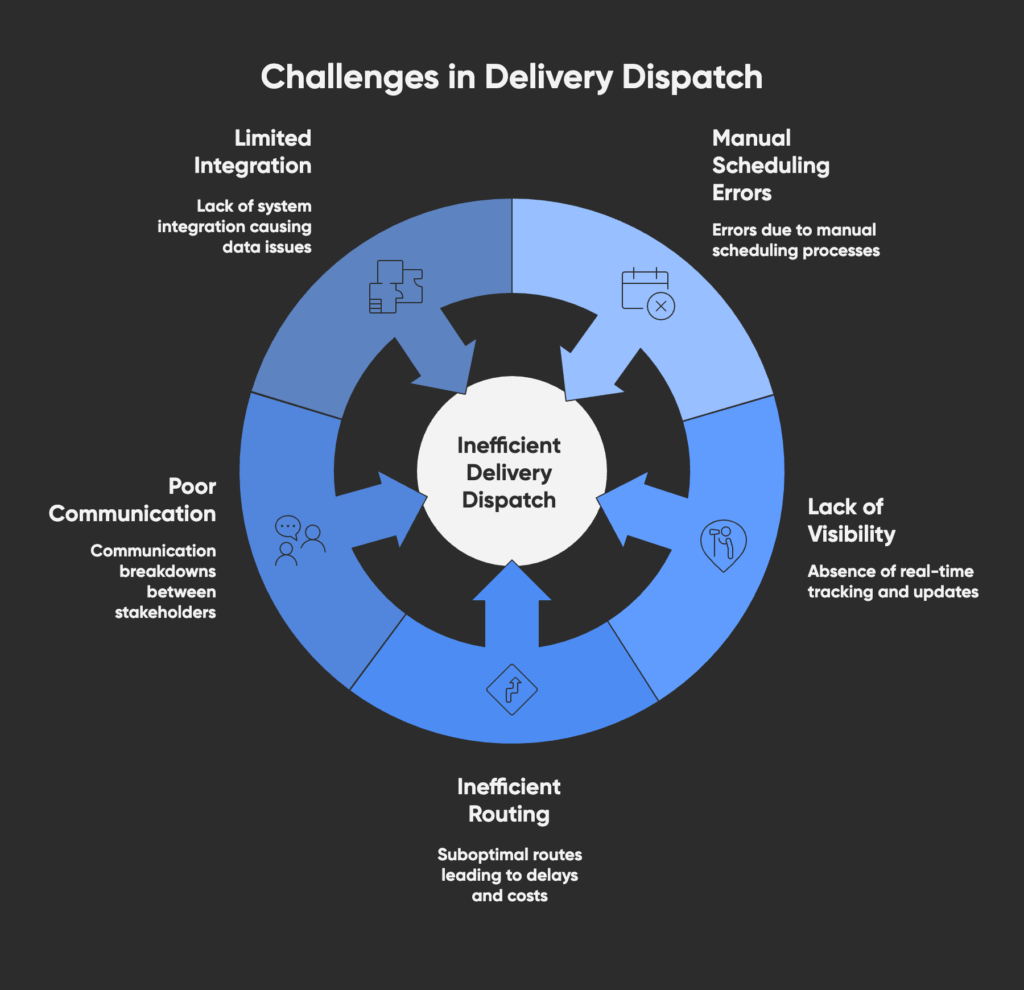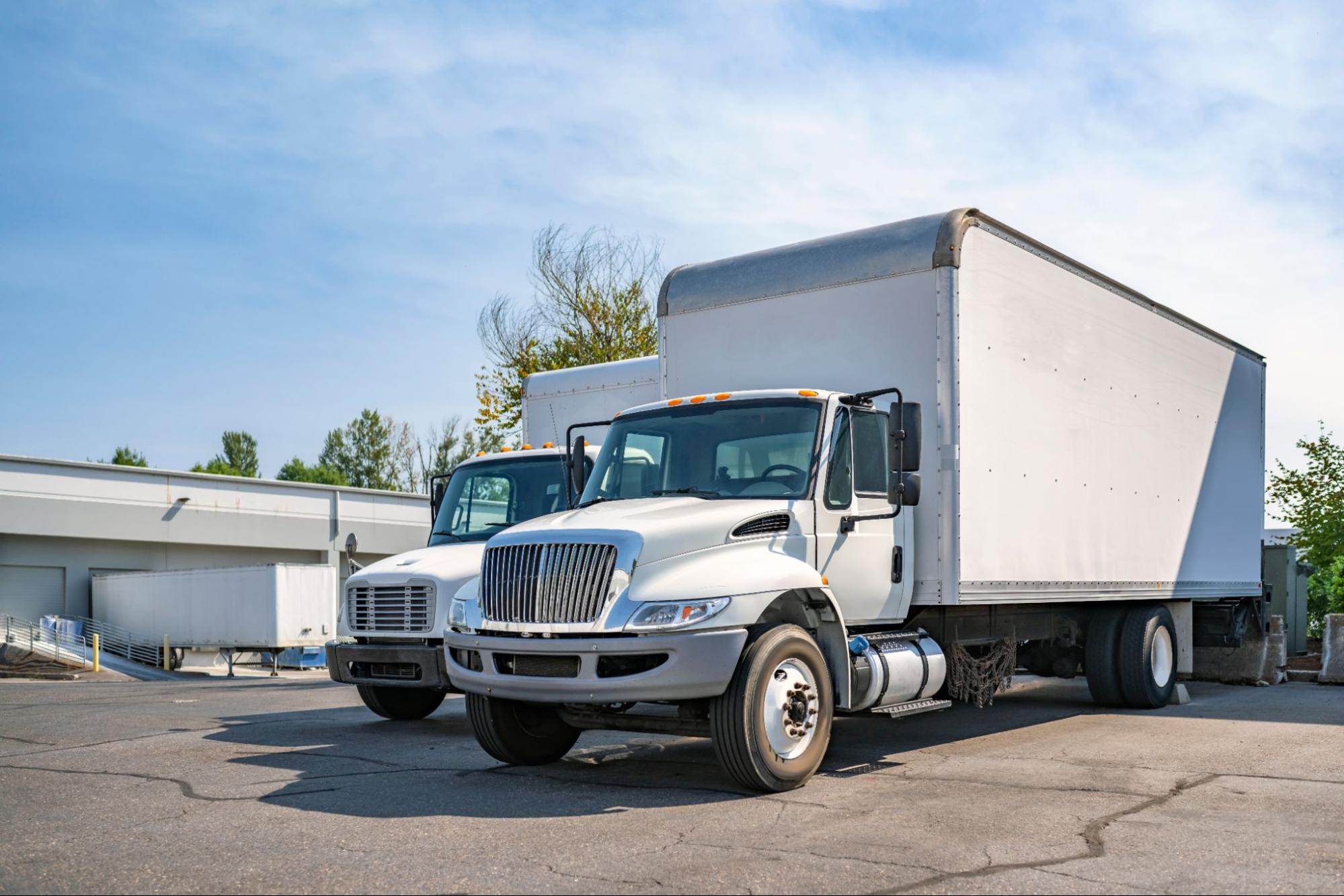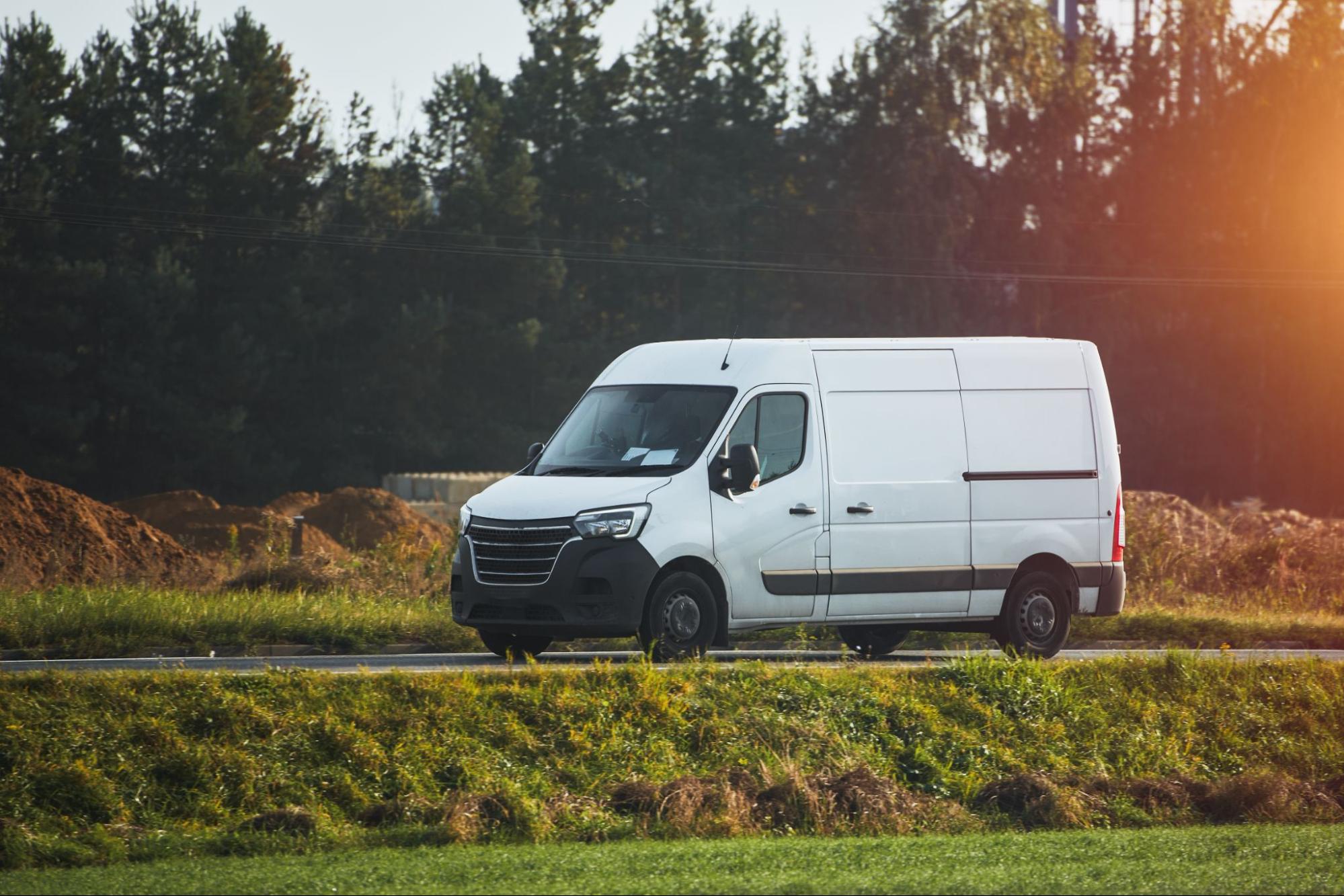Would you be surprised to learn that 80% of customers want same-day delivery? But that’s not all. 30% expect that delivery will be same-day. Yes. That 80% of customers want same-day delivery. No surprises there, right? That’s not all. 30% expect that delivery will be same-day. Yes. That’s what you’re up against if you’re in the delivery business. You’ve got to be fast, reliable, and affordable.
How can you possibly navigate all these demands and stay profitable?
Dispatch software for delivery services.
With innovative solutions that draw on AI and automation, you can save time and money and build a strong base of loyal clients. You just have to be willing to shift from the old, tedious practice of running your dispatch business manually. Let the delivery management software do it for you.
In this article, we’ll define dispatch management software and discuss key features you should be getting. We’ll also highlight Cigo Tracker as the best app for your business.
Key Takeaways
- Modern delivery dispatch software is essential for meeting today’s customer expectations, including fast, reliable, and transparent deliveries.
- Key features like real-time tracking, automated routing, and customer notifications reduce operational costs and boost customer satisfaction and trust.
- Cigo Tracker stands out as a scalable, user-friendly solution that helps businesses of any size streamline logistics, improve performance, and grow with confidence.
What Is Dispatch Software for Delivery Services?
Dispatch software for delivery services is a digital tool. This tracking software can help you manage, schedule, and track deliveries for the utmost efficiency. It’s order management, or a central command center for your last mile delivery. Your dispatchers can assign routes and monitor drivers in real time. And you can trust that your packages will arrive where they are supposed to, when they are supposed to.
When you automate the many manual dispatching processes, you allow the software to cut way down on human error. You’ll also see productivity go up and customer satisfaction soar.
At its core, delivery dispatching software includes several key components:
- Route optimization
- Driver communication tools
- Real-time GPS tracking
- Proof of delivery
- Customer service via notifications
- Analytics
Thanks to these features, and when fully adopted, this software provides enormous benefits. You can streamline local deliveries and plan for white-glove service scheduling. You can even have your dispatch operation assign specific technicians for specific projects with tight deadlines.
Plus, you can grow with delivery dispatch software in ways you just can’t with a manual approach. The system will scale with you, and your teams can access it from anywhere, thanks to cloud-based platforms. You can onboard new drivers, train new staff, and still increase your reliability rates.
As the need for fast, cheap, dependable deliveries rises, you need tools to keep you competitive and delivering (pun intended). No matter the size of your business now or in the future, the right software can ensure you exceed customer expectations. You can also keep your staff happily on task.
Key Challenges in Delivery Dispatch

It might seem straightforward to manage your deliveries. But we all know the logistics teams face so many challenges just to stay on top of it all. These challenges impact:
- Cost
- Efficiency
- Customer satisfaction
- More
Without the right tools, you’ll forever be scrambling to get it right. Human error can create chaos in a single moment. So, you’re left reacting instead of implementing a strategy.
Here are some of the most common pain points when it comes to delivery dispatch:
Manual scheduling errors
Dispatching deliveries manually creates tons of room for human error. You’ve got to deal with spreadsheets, phone calls, and whiteboards. Before you know it, you’ve got missed appointments, double bookings, and inefficient driver allocation.
Lack of visibility into delivery status
Real-time visibility is critical for logistics in the modern era. Without GPS tracking or automated status updates, dispatchers are fumbling and guessing where drivers are. Even worse, your customers are in the dark.
This lack of transparency leads to the phone ringing off the hook with support calls. You’ve also frustrated end-users. The end result is undermined trust in your brand.
Inefficient routing and fuel costs
When you don’t optimize your routes, your drivers might take longer paths. This means they might encounter avoidable traffic, and then they’ll miss delivery time windows. This doesn’t just delay packages. It also increases fuel consumption and vehicle wear and tear. And the sad reality is that poor routing is one of the most avoidable cost centers in logistics today.
Poor communication with customer and drivers
You must be able to communicate with your staff. And they have to be able to communicate with each other. But without integrated tools, dispatchers have to manually relay updates to both drivers and customers.
Now you’ve got delays and errors in information sharing. In the end, missed calls, unclear instructions, or lack of arrival notifications can result in failed deliveries and, worst, negative reviews.
Limited integration with existing systems
If your dispatch software doesn’t integrate well with your CRM, ERP, or eCommerce platform, your team may not adopt it. Or, they may waste time on double data entry and disconnected workflows. This lack of system harmony will down your daily operations and reduce visibility across your entire business.
Overcoming these challenges requires a modern, unified platform. We’re happy to report that Cigo Tracker automates tasks and connects every part of the delivery chain. You can overcome every single challenge presented here.
Essential Features of Modern Dispatch Software
As customer expectations grow and delivery networks become more complex, you just can’t rely on outdated tools or manual intervention. You need innovative software for your dispatch operations. To stay competitive, you need robust delivery dispatch software with a two-pronged approach. It has to simplify your daily logistics and enhance the entire customer experience. Yes, it’s a tall order, but it’s possible.
We’ve listed below the essential features defining top-tier dispatch platforms today:
-
Real-time GPS tracking
Real-time GPS tracking is the foundation of the modern delivery dispatch solution. It allows dispatchers to see where drivers are at all times. This capability helps them make informed decisions in case of delays, traffic congestion, or customer changes.
For customers, live tracking links provide full transparency. This of course reduces the number of support calls asking, “Where’s my order?”
This feature is also vital for safety and accountability. By monitoring driver routes, you can:
Stay on top of schedules
Identify patterns that affect delivery efficiency
Respond quickly to on-road incidents
Ultimately, GPS tracking builds trust between you and your customers. It’s able to meet this mission-critical goal by delivering visibility and control.
Automated route optimization
Manual route planning is time-consuming and inefficient. Not great, right?
In contrast, automated route optimization uses real-time traffic data, delivery windows, and geographical constraints. These help generate highly efficient paths for your drivers. As a natural byproduct, you’ll reduce fuel consumption and improve delivery times.
The bonus? You’ll create space for more deliveries per shift. So you’re driving revenues higher.
Advanced algorithms also adapt in real time.
For example, if a customer cancels a delivery or a driver runs into unexpected traffic, the software can automatically adjust the route and reroute other nearby drivers to maintain efficiency. Planning in this way is essential for any business struggling to manage a high volume of deliveries.
Driver mobile app
A dedicated mobile app for drivers makes a world of difference in field operations. Through the app, drivers can receive their daily routes, get real-time updates, communicate with dispatch, and capture proof of delivery.
The best driver apps are user-friendly and require minimal training. So your drivers will be much more likely to adopt them and build them into their workflow. They also work in offline mode when drivers have no signal.
These apps help reduce check-in calls to dispatch and allow for faster onboarding of new drivers. You can even find apps that integrate features like turn-by-turn navigation, delivery instructions, and signature/photo capture.
Customer notifications and live ETAs
Let’s face it: your customers expect accurate ETAs and ongoing communication. They want to know everything about their deliveries. With the right software, they’ll get automated notifications via SMS or email. That way, your customers will know when their delivery is en route, delayed, or arriving soon.
These notifications improve the delivery success rate because they make sure customers are available to receive their orders. This feature is especially important for high-value or scheduled items like furniture or appliances.
Proof of delivery capture
Capturing proof of delivery (POD) closes the loop on each job. Modern dispatch software lets drivers capture digital signatures, photos, or barcode scans directly in their mobile app.
Documenting in this way protects your business from disputes and provides a verifiable audit trail. It also assures customers that their order has been completed. If a driver has to leave a package without the customer present, photos serve as indisputable proof that it was left in the agreed location.
Analytics and reporting dashboard
Dispatch is not just about execution. It’s also about continuous improvement. A strong analytics dashboard gives operations managers the insights they need to optimize performance. You’ll get critical data about drivers, routes, and delivery outcomes.
Key metrics can include:
On-time delivery rate
Average delivery duration
Fuel usage
Customer satisfaction
Driver performance
These reports help identify trends, locate inefficiencies, and inform strategic decisions. In these fast-moving logistics environments, data-driven insights serve as a competitive advantage over your contemporaries.
API and integrations with ERP/CRM/eCommerce platforms
Data silos and manual entry slow down productivity. To speed things up, dispatch software integrates seamlessly with your existing systems.
These systems might be an ERP for inventory, a CRM for customer data, or an eCommerce platform like Shopify or WooCommerce.
To take it a step further, API access allows businesses to automate workflows. You can also sync delivery data with orders in real time. This streamlining keeps every team (from support to sales) on the same page. As just one example, once an order is marked delivered in the dispatch system, it can automatically update order status in your store or trigger a feedback email to the customer. Or both.
Scalability for growing businesses
Perhaps one of the most overlooked features is scalability. Of course, it may also be the most critical. You want to grow. Who doesn’t?
But as your business grows, so, too, should your dispatch software. Whether you’re expanding to new regions, adding vehicles, or integrating new service lines, the platform should be flexible. It has to accommodate evolving needs without major disruption. Or it’s only a matter of time before you outgrow it.
Scalable software supports multi-location dispatching, custom user roles, and bulk import/export tools. The goal, always, is to simplify onboarding and data management, regardless of your business size. Cloud-based platforms offer added benefits like automatic updates, secure backups, and anytime-anywhere access. This makes them ideal for businesses on a growth trajectory, like yours.
In our delivery-driven economy, these features have gone way beyond “nice to have.” They are now elemental to the delivery business itself.
Cigo Tracker’s delivery dispatch software combines all of these elements into a single, intuitive platform that helps businesses:
Streamline dispatch
Improve customer satisfaction
Scale with consistent confidence
For companies serious about modernizing their logistics operations, feature-rich software is the solution to all your problems.
How to Choose the Right Delivery Dispatch Software
With so many delivery dispatch tools on the market, choosing the right one can be overwhelming. The best tool for you should be one that aligns with your operational needs, supports your mobile workforce, and offers easy onboarding.
Here’s what to consider—and why Cigo Tracker stands out as a top choice.
Your needs: While you of course want scalability, you also want to consider the size of your business right now. If you don’t have a ton of vehicles or volume, you shouldn’t be paying as if you do. Consider what your business needs right now, and then make sure the tool will grow as you do.
Your mobility: This one should be obvious. You’re offering delivery services. Of course you want a tool that will deliver for you, when and where you need it. Make sure the software you choose meets you, and your staff, where you are.
Onboarding and training: Adoption is everything when it comes to new tools. If your staff won’t use it, there’s no point in even investing in it. Make sure your software is easy to use, that you can get solid training, and that you’ll have excellent customer support.
Cigo Tracker hits all the marks: Not to toot our own horn (okay, yes to tooting our own horn), Cigo Tracker really does have all your bases covered. With our intuitive design, mobile-friendly platform, and robust onboarding support, we’re here to support your business, whatever its size. Cigo Tracker’s last-mile delivery software is also built to scale with your business while delivering the speed, flexibility, and reliability today’s.
We’re here to meet all your demands and exceed all your expectations.
Get Your Free Trial Now
It’s clear: staying competitive means embracing the right technology. Delivery dispatch software is just such a technology.
From eliminating scheduling errors to improving communication and reducing costs, the benefits abound. And when it comes to choosing the right tool, Cigo Tracker stands out for our smart design, powerful features, and scalable support.
Whether you’re managing a handful of deliveries or scaling a national operation, Cigo Tracker has the tools to:
Streamline your dispatch
Elevate customer satisfaction
Boost your bottom line
Ready to simplify your delivery operations?
Start your free trial with Cigo Tracker today.



